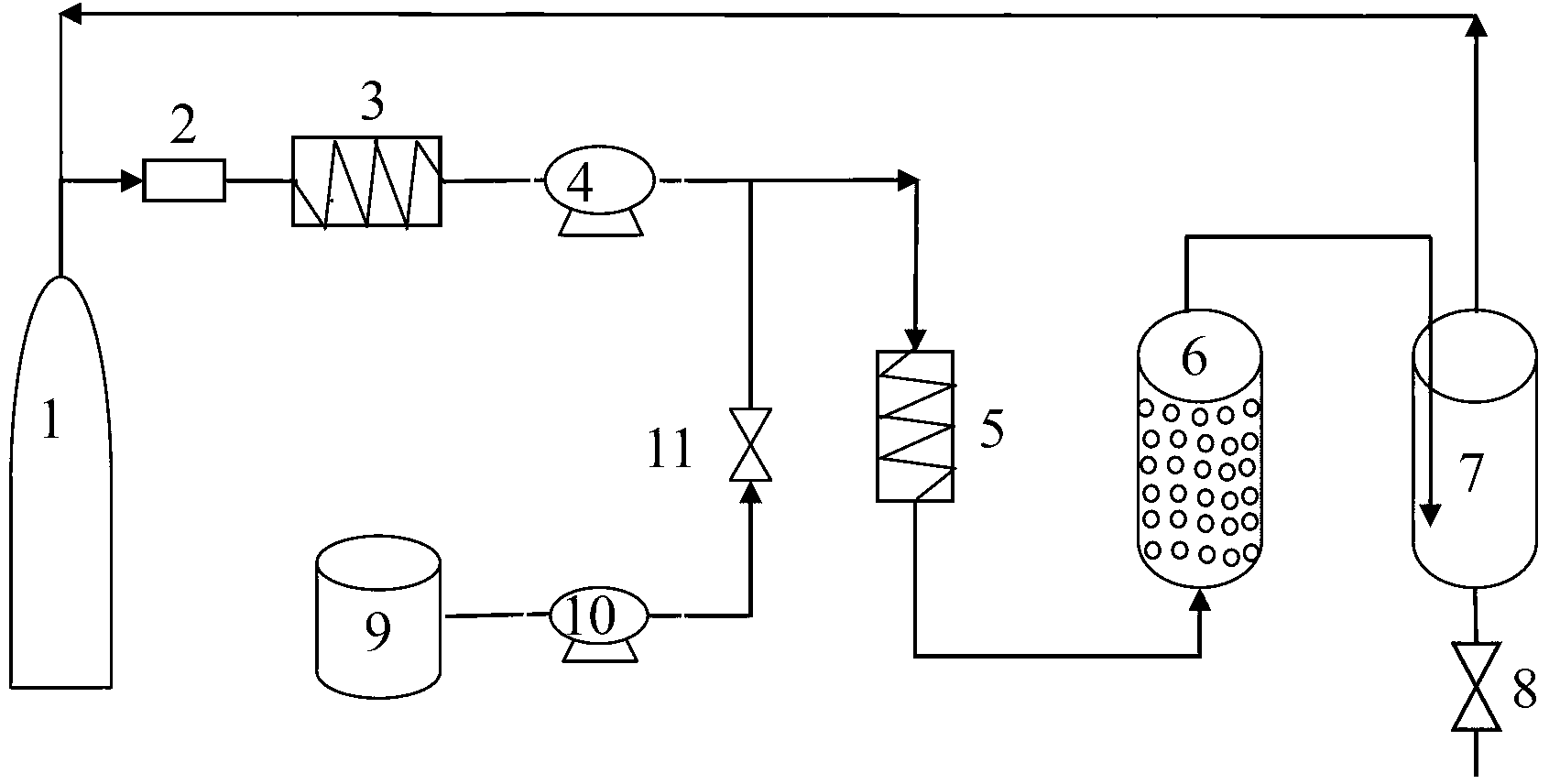Method for removing pesticide residue in citrus essential oil
A technology for pesticide residues and citrus, which is applied in the field of plant essential oils, can solve problems such as removal, and achieve the effects of small loss, reduced production cost and simple process flow
- Summary
- Abstract
- Description
- Claims
- Application Information
AI Technical Summary
Problems solved by technology
Method used
Image
Examples
Embodiment 1
[0030] Take 450g of crudely processed sweet orange essential oil as raw material, completely absorb it with 400g of octadecylsilane, put it into the extraction kettle, and then fill it with octadecylsilane that has not absorbed the essential oil and compact it. Set the extraction pressure to 7.5MPa, the extraction temperature to 32°C, the temperature of the separation tank to 30°C, and the pressure to 3MPa. After 1 hour of extraction to remove pesticide residues, nearly 75% of chlorpyrifos, chlorpyrifos, and dimethoate were removed, and the loss of aroma components in sweet orange essential oil was <5%.
Embodiment 2
[0032]Take 360g of crudely processed lemon essential oil as raw material, completely absorb it with 400g of 40-60 mesh microsphere silica gel, mix it evenly, put it into a 2L extraction kettle and compact it, then fill it with microsphere silica gel that has not absorbed essential oil and compact it. Set the extraction pressure to 10MPa, the extraction temperature to 40°C, the temperature of the separation tank to 45°C, and the pressure to 5MPa. After 1.5 hours of extraction to remove pesticide residues, nearly 73% of chlorpyrifos, chlorpyrifos, and dimethoate were removed, and the loss of aroma components in lemon essential oil was <5%.
Embodiment 3
[0034] Take 350g of crudely processed bergamot essential oil as raw material, absorb with 350ml, 60-80 mesh diatomite, mix well, put it into a 2L extraction kettle, and then add 1650ml, 60-80 mesh diatomite. Set the extraction pressure to 13MPa, the extraction temperature to 55°C, the temperature of the separation tank to 60°C, and the pressure to 7MPa. After 2 hours of extraction to remove pesticide residues, nearly 71% of chlorpyrifos, chlorpyrifos, and dimethoate were removed, and the loss of aroma components in bergamot essential oil was <5%.
PUM
 Login to View More
Login to View More Abstract
Description
Claims
Application Information
 Login to View More
Login to View More - R&D
- Intellectual Property
- Life Sciences
- Materials
- Tech Scout
- Unparalleled Data Quality
- Higher Quality Content
- 60% Fewer Hallucinations
Browse by: Latest US Patents, China's latest patents, Technical Efficacy Thesaurus, Application Domain, Technology Topic, Popular Technical Reports.
© 2025 PatSnap. All rights reserved.Legal|Privacy policy|Modern Slavery Act Transparency Statement|Sitemap|About US| Contact US: help@patsnap.com

